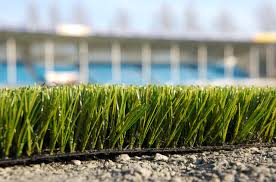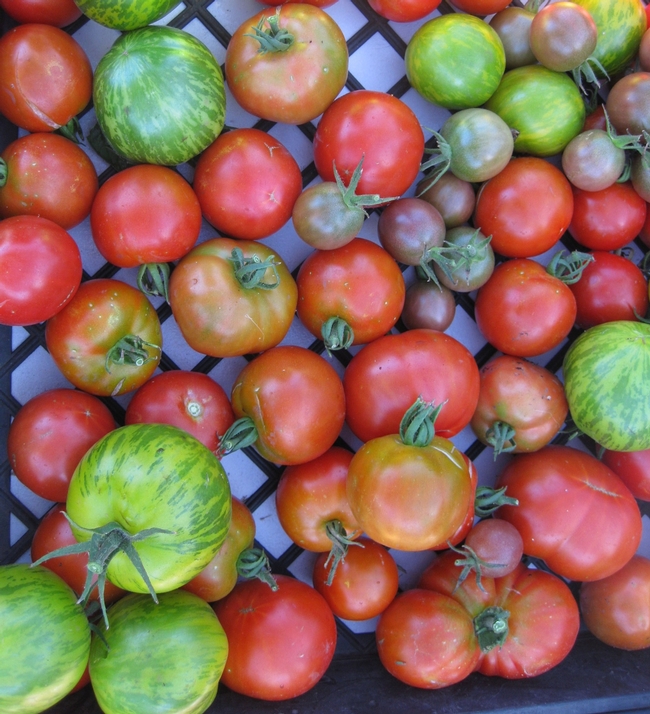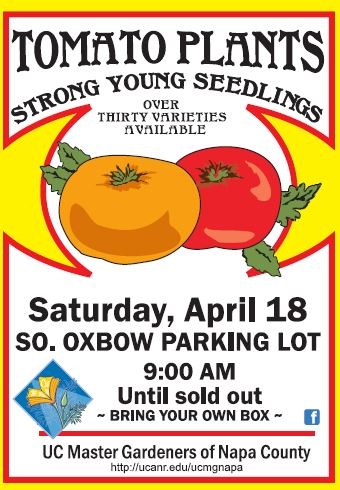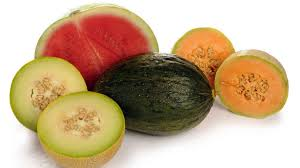

If you have time and money to invest, you will only have to mow, de-thatch, rake, weed, fertilize and remove animal waste from your lawn. The University of California at Davis's Integrated Pest Management website has a lot of information about how to care for your lawn (http://www.ipm.ucdavis.edu/TOOLS/TURF/RENOVATE/index.html).
The tips and techniques found on this site will help you limit, if not preclude, the use of herbicides. By using less herbicide, you limit your exposure, and that of your pets and surrounding plants, to toxic chemicals.
However, the time you spend following these tips is time not spent relaxing on your lawn. I am exhausted thinking about the maintenance required by natural grass. And we can't forget watering. Lawns are, by far, the thirstiest part of a landscape. Over a year, the cost of watering a lawn can be as expensive as a short Hawaiian vacation.
I prefer an annual Hawaiian vacation over a nice lawn. That's why I installed synthetic grass in my yard. After six years, my synthetic lawn looks as great as it did when installed. It hasn't faded from the sun or begun to degrade from the elements. The only maintenance my lawn requires is an occasional pass with a leaf blower to give it a fresh-mowed look.
When it's in direct sun, the synthetic grass can get hot, which is also often the case with natural grass. Most synthetic turf reflects light, reducing the amount of heat it will absorb and limiting fading. You can place patio furniture on a synthetic lawn without damaging the turf. I do use rubber coasters under furniture legs to distribute the weight, but that's just for peace of mind.
With synthetic turf, you don't have to worry about subterranean creatures digging holes, as they do in natural turf. The base fabric is strong enough to prevent animals from digging or chewing through it, while still porous enough that water will drain through.
The product has come a long way since it was first introduced in 1965 in the new Houston Astrodome and given the moniker “Astroturf.” There are numerous brands, with a choice of colors and pile height. Golfers can even have a putting green installed.
To provide the cushioned feel of natural grass, synthetic grass has a fill of either sand, fractured rubber or a combination. This fill keeps the grass upright, prevents matting and serves as an excellent weed barrier.
Proper installation of a synthetic lawn requires more than just cutting, measuring and unrolling. Installation should be performed by a licensed landscape contractor who is proficient with the product. A conscientious contractor will prepare the site by excavating several inches below the level of the lawn and backfilling with compacted drainage rock so that water will filter through the lawn and not pool on top.
Some people question whether synthetic grass is safe for children and pets. Concerns include possibly high levels of lead. The Centers for Disease Control and Prevention studied synthetic playing fields in New Jersey for risk of lead exposure (http://www.cdc.gov/nceh/lead/tips/artificialturf.htm). The study determined that lawns made of nylon or a nylon-polyethylene blend carry a potential health risk, while lawns made entirely of polyethylene contain a low level of lead.
When shopping for a synthetic lawn, ask about the composition. However, a typical home lawn is probably too small to carry much risk of exposure. Synthetic grass may be less flammable than natural turf, but conclusive research is hard to find. Common sense suggests that the turf would melt or at least scorch if exposed to fire, a hazard even if the grass doesn't ignite. Protect your artificial turf from open flame and extreme heat.
With some research, many homeowners will decide that synthetic grass is an economical and environmentally friendly alternative to a natural lawn. Making the change will free up time to spend enjoying the yard.
Tomato Sale and Education Event: Napa County Master Gardeners are hosting their third annual Tomato Sale on Saturday, April 18. Join us in the South Oxbow parking lot in Napa, 9 a.m. until sold out. We have a bountiful selection of strong, young plants: heirlooms, hybrids, cherry, paste and just plain good eating tomatoes of all sizes. Remember to bring your own box to safely transport your plants home. Click on the link above to read descriptions of the varieties for sale.
Master Gardeners are volunteers who help the University of California reach the gardening public with home gardening information. Napa County Master Gardeners ( http://ucanr.org/ucmgnapa/) are available to answer gardening questions in person or by phone, Monday, Wednesday and Friday, 9 a.m. to Noon, at the U. C. Cooperative Extension office, 1710 Soscol Avenue, Suite 4, Napa, 707-253-4143, or from outside City of Napa toll-free at 877-279-3065. Or e-mail your garden questions by following the guidelines on our web site. Click on Napa, then on Have Garden Questions? Find us on Facebook under UC Master Gardeners of Napa County.

In the cherry category, ‘Sun Gold' is a perennial favorite of Napa County Master Gardeners. Steve Rae also likes ‘Miller's Cove Currant'. It produces incredible numbers of half-inch, sweet red tomatoes over the entire season. I like ‘Black Cherry'. It has the rich taste common to the so-called black tomatoes and holds up better to roasting than most cherry tomatoes.
Which varieties to choose for making sauce or paste or for drying? Pat Hitchcock grew the hybrid ‘Big Mama' last year and says this plant was a great producer and perfect for sauce. I grew ‘Opalka', a Polish heirloom paste tomato. I will grow it again because it was so meaty and had few seeds. I used it for sauce but also found it ideal for bruschetta and for drying.
Some Master Gardeners are big fans of black tomatoes. Mickey Riva, Marci Nielsen‑Berruezo and Lorie Mazzaroppi all sing the praises of ‘Black Krim'. Marci describes it as dark and mysterious in appearance and rich in flavor, with a natural saltiness that adds complexity. One of my dark favorites is ‘Paul Robeson'. It resembles Cherokee Purple' in flavor but produces earlier and is extremely prolific. Penny Pawl and Helen Bergin favor ‘Japanese Black Trifele'. It is the only variety that Penny grows, and Helen loves its taste,appearance and resistance to cracking.
Do you have room in your garden for only one tomato? For length of harvest and consistent performance, Gayle Keane and Jo Moore swear by ‘Early Girl'. Amelia Ceja loves ‘Green Zebra' for its flavor, beautiful color and suitability to the cool Carneros region. She uses it for her spicy, fire-roasted tomato salsa. David Layland's favorite is ‘Bloody Butcher', an early producer that persists well into fall.
Many gardeners grow large tomatoes for slicing. Some prefer traditional all-red varieties, while others favored multicolored types. Meredith Lavene loves ‘Red Brandywine', which won the large tomato category in last year's Napa County Master Gardeners taste test. Lois Quick prefers ‘Marvel Stripe'. Orange and yellow outside, this large tomato reveals streaks of red, yellow and orange when sliced. It has a sweet, fruity taste. Mike Weinberg grows ‘Pink Berkeley Tie Dye' for its size, taste, yield and beauty.
If you are looking for new tomato varieties to try, ask yourself these questions. How do you plan to use the fruit? Will you be cooking and preserving your tomatoes, or do you primarily eat them fresh? How much room do you have in your garden? How would you rank the importance of flavor, appearance, productivity and disease resistance? Research the characteristics of different varieties before you make your choices. Decide whether you prefer hybrids or heirlooms or want to grow some of each.
Many hybrid varieties have been bred for productivity and resistance to diseases that plague tomatoes. On plant tags, look for the letters V,F,N,T and A, which indicate resistance to Verticillium wilt, Fusarium wilt, nematodes, tobacco mosaic virus and Alternaria stem canker.
Heirloom tomatoes offer a wide spectrum of flavors, colors, textures and shapes. While heirlooms may not be as productive as hybrids and tend to be more susceptible to disease, many home gardeners appreciate them for their unique characteristics. What's more, you can save and replant heirloom tomato seeds next year; in contrast, seeds from a hybrid variety will not “come true,” or produce an identical tomato when replanted.
Whichever varieties you choose, wait until the danger of frost is past and the soil is sufficiently warm to plant your tomatoes. Soil temperatures below 57ºF delay growth and leave the plants more susceptible to insect damage and disease. Tomatoes planted later usually catch up with those planted in colder weather. I wait until the last week in April to plant mine, and even then, I watch the forecast so I can cover them if frost threatens.
Tomato Sale and Education Event: Napa County Master Gardeners are hosting their third annual Tomato Sale on Saturday, April 18. Join us in the South Oxbow parking lot in Napa, 9 a.m. until sold out. We have a bountiful selection of strong, young plants: heirlooms, hybrids, cherry, paste and just plain good eating tomatoes of all sizes. Remember to bring your own box to safely transport your plants home. Click on the link above to read descriptions of the varieties for sale.
Master Gardeners are volunteers who help the University of California reach the gardening public with home gardening information. Napa County Master Gardeners ( http://ucanr.org/ucmgnapa/) are available to answer gardening questions in person or by phone, Monday, Wednesday and Friday, 9 a.m. to Noon, at the U. C. Cooperative Extension office, 1710 Soscol Avenue, Suite 4, Napa, 707-253-4143, or from outside City of Napa toll-free at 877-279-3065. Or e-mail your garden questions by following the guidelines on our web site. Click on Napa, then on Have Garden Questions? Find us on Facebook under UC Master Gardeners of Napa County.

A ripe, juicy cantaloupe or honeydew melon fresh from the vine is one of the sweetest tastes of summer. And a chilled slice of red or pink watermelon, with or without seeds to spit, is a warm-weather icon.
Cantaloupe, casaba, crenshaw, honeydew and Persian melons are all muskmelons (Cucumismelo). Watermelons (Citrulluslanatis or C. vulgaris) come from a different family, yet all these fruits have much in common. They all have high water and sugar content and thrive in summer heat.
To be successful with melons in Napa, where hot afternoons are often preceded by cool, foggy mornings, choose early- or short-season varieties that do not require uninterrupted sunshine and warmth. Muskmelon types that have proven successful in our area and are recommended by University of California Cooperative Extension include ‘Ambrosia Hybrid', ‘Burpee Hybrid', ‘Fruit Punch Hybrid', ‘Haogen', ‘Harper Hybrid', ‘Honeyshaw', ‘Jenny Lind', ‘Limelight', ‘Ogden', ‘Pineapple Hybrid', ‘Samson', ‘Sweet 'n Early Hybrid' and ‘Venus Hybrid'.
For the last two years, I have grown a cantaloupe type from Italy that has become my favorite:‘Melon RetatoDegliOrtolani'. Weighing three to four pounds, these melons have surface netting and a lush, sweet flesh. According to the seed packet, this is the proper melon to eat with Parma ham, although I find it delicious on its own. You can tell when one of these melons is perfectly ripe because the stem just falls off. No guessing. Purchase seeds from www.growitalian.com.
Watermelons require more heat than muskmelons. Grow early, icebox-sized types such as ‘New Hampshire Midget' to assure ripening before the end of the season. If you plant from seed, you will have access to a rainbow of colors.
Many muskmelons weigh in at a manageable three to four pounds, but watermelon can weigh up to 30 pounds. If you choose to go big, you may need a dedicated refrigerator for your harvest.
Whichever melons you choose to plant, prepare your beds or hills well. Melons are heavy feeders, needing plenty of nutrients, water and space. Trellising can help you optimize the area that you have, but be prepared to provide support for heavy melons as they swell. Old stockings or tights work well.
The University of California publication “Growing Melons in Napa County” has this to say: “Double-dig the area you will plant to melons. Before planting, work 5-10-10 fertilizer, or equivalent, into the soil at the rate of 3 pounds per 100 square feet. Bury a second application of fertilizer in a furrow about a foot away from the stem when runners are about a foot long. A third application can be made after the first melons set. Promote early flowering and fruit set by planting transplants. You can start your seed in pots four to six weeks before setting out into the field. Melon seeds germinate best at soil temperature above 75°F. Warm the soil before planting seeds by covering the prepared ground with clear plastic film. Melons are planted mid-May to mid-June on 6-by 6-foot spacing.
“Vines require plenty of water when growing vigorously, but hold back on water after fruits reach baseball size. Melons are deep rooted. Be sure to soak the soil to four feet deep. Weekly watering is normal for Napa County conditions. Excessive irrigation promotes root rot. It is normal for melon leaves to wilt in late afternoon during hot weather, but they should recover by morning. If not, they require a deep irrigation. Keep weeds out of melons until the vines shade the soil.”
More growing tips, including information on preventing pests and diseases, can be found in the publication “Growing Melons in Napa County” by Dean Donaldson. (http://ucanr.org/sites/ucmgnapa/files/81949.pdf)
How many muskmelons or watermelons should you plant? The size of your garden will generally be your limiting factor, but the California Master Gardener Tip Sheet (http://camastergardeners.ucanr.edu/files/28365.pdf) suggests five to ten hills of muskmelon or six watermelon plants for a family of four.
Whether you grow or purchase your melons, be sure to wash thoroughly in cool water before cutting them. The University of California recommends brushing off the loose dirt, washing well, rinsing in cool water and then sanitizing the exterior of the melon with a light chlorine solution. Seriously. You don't know where that melon has been.
Tomato Plant Sale: Napa County Master Gardeners will hold their second annual “Tomato Plant Sale and Education Day” on Saturday, April 19, in the South Oxbow parking lot on First Street in Napa. The sale will be held from 9:00 a.m. until sold out. All the seedlings have been started from seed and grown by Napa County Master Gardeners. At least 50 varieties of heirloom and hybrid tomato plants will be available. Master Gardeners will staff information tables on tomato support structures, common tomato pests and diseases, composting, good bug/bad bug displays and a mobile help desk. For a list of available tomato varieties, visit http://ucanr.org/ucmgnapa or call the Help Desk (hours below).
Master Gardeners are volunteers who help the University of California reach the gardening public with home gardening information. Napa County Master Gardeners ( http://ucanr.org/ucmgnapa/) are available to answer gardening questions in person or by phone, Monday, Wednesday and Friday, 9 a.m. to Noon, at the U. C. Cooperative Extension office, 1710 Soscol Avenue, Suite 4, Napa, 707-253-4143, or from outside City of Napa toll-free at 877-279-3065. Or e-mail your garden questions by following the guidelines on our web site. Click on Napa, then on Have Garden Questions? Find us on Facebook under UC Master Gardeners of Napa County.
Napa County Master Gardeners welcome the public to visit their demonstration garden at Connolly Ranch on Thursdays, from 10:00 a.m. until noon, except the last Thursday of the month. Connolly Ranch is at 3141 Browns Valley Road at Thompson Avenue in Napa. Enter on Thompson Avenue.

David Layland's favorite for the past two seasons has been ‘Bloody Butcher'. At three to four ounces, the tomatoes are relatively small but pack a lot of rich flavor. Best of all, they mature in about 55 days and are still producing up to the first frost.
Jill Rae enjoys many of the cherry tomato varieties. She likes to combine ‘Black Cherry', ‘Miller's Cove Currant', ‘Snow White' and ‘Sungold' cherry tomatoes in a salad with basil. The combination of colors makes for an attractive dish and the flavors mix well. Jill also likes to grow ‘Big Mama' for tomato sauce. Jane Callier counts ‘Big Mama' as a favorite also. Her bush was prolific last year and the tomatoes were sweet.
Pat Hitchcock enjoys growing tomatoes of different colors. In addition to ‘Sungold', her favorites include ‘Amana Orange'. In her experience, this tomato is sweet, late maturing, of good size and relatively resistant to disease. Steve Rae says that ‘Marvel Stripe' is not only great tasting but colorful. Orange and yellow outside, this large tomato displays internal streaks of red, yellow and orange.
Several Master Gardeners sing the praises of ‘Cherokee Purple'. One of the so-called “black” varieties, this heirloom has a deep purplish-red hue. It produces relatively late in the season, but it has such a rich, complex taste that it is worth the wait. Others say that if they could only grow one tomato, it would be ‘Early Girl', an early-to-ripen tomato that is great for salads and sandwiches. It produces until the first frost and is disease resistant.
If you are looking for new tomato varieties to try in your garden, ask yourself a few questions. Do you want tomatoes for cooking and preserving, or primarily for eating fresh? Do you have a large garden, a small one or just enough space on a patio to grow your plants in containers?
Depending on how you answered these questions, you might want to know whether a tomato variety is determinate or indeterminate. Determinate tomatoes grow to a certain size, generally between three and five feet, and bear most of their fruit within a four- to six-week period. Determinate tomatoes are often chosen for canning since the yield comes within a shorter time period.
Indeterminate tomatoes grow and bear fruit all summer, until the arrival of frost. These types need support, such as trellises, stakes or cages, to keep them from sprawling on the ground, where the fruit tends to rot.
Also consider the plant's susceptibility to disease. Many hybrid varieties have been bred to resist diseases that often plague tomatoes. Look on plant labels or in catalog descriptions for the letters V,F,N,Tand A. If present, these letters indicate that the variety is resistant to verticilliumwilt, fusariumwilt, nematodes, tobacco mosaic virus or alternaria stem canker.
The popular heirloom tomatoes offer a wide spectrum of choices in taste, color, texture and shape, and they are expensive at the grocery store. While heirlooms are sometimes not as productive as hybrids and tend to be more susceptible to disease, many home gardeners appreciate their unique characteristics. What's more, their seed can be saved for replanting next year. In contrast, saved hybrid seeds will not produce identical plants the following year.
Whichever varieties you choose, be sure to wait until the danger of frost is past and the soil is sufficiently warm to plant your tomatoes. Soil temperatures below 57ºF delay growth and leave the plants more susceptible to insect damage and disease. Tomatoes planted later usually catch up with those planted in cold soil. I am waiting until May 1 to plant mine.
Tomato Plant Sale: Napa County Master Gardeners will hold their second annual “Tomato Plant Sale and Education Day” on Saturday, April 19, in the South Oxbow parking lot on First Street in Napa. The sale will be held from 9:00 a.m. until sold out. All the seedlings have been started from seed and grown by Napa County Master Gardeners. More than 50 varieties of heirloom and hybrid tomato plants will be available. Master Gardeners will staff information tables on tomato support structures, common tomato pests and diseases, composting, good bug/bad bug displays and a mobile help desk. For a list of available tomato varieties, visit http://ucanr.org/ucmgnapa or call the Help Desk (hours below).
Workshop: Napa County Master Gardeners will conduct a workshop on “The Small Home Vineyard” on Saturday, March 29, from 9:30 am to 11:30 am, and from 12:30 pm to 2:30 pm. at the Yountville Community Center, 6516 Washington Street, Yountville. The morning session will focus on bud break to harvest. Learn the basics of managing a small vineyard including grape physiology, canopy management, vine nutrition, fertilization, irrigation and cover crop. The afternoon session will focus on identifying and managing the most common vineyard pests, especially powdery mildew. To register,call the Parks & Recreation Department at 707-944-8712 or visit its web site.
Master Gardeners are volunteers who help the University of California reach the gardening public with home gardening information. Napa County Master Gardeners ( http://ucanr.org/ucmgnapa/) are available to answer gardening questions in person or by phone, Monday, Wednesday and Friday, 9 a.m. to Noon, at the U. C. Cooperative Extension office, 1710 Soscol Avenue, Suite 4, Napa, 707-253-4143, or from outside City of Napa toll-free at 877-279-3065. Or e-mail your garden questions by following the guidelines on our web site. Click on Napa, then on Have Garden Questions? Find us on Facebook under UC Master Gardeners of Napa County.
Napa County Master Gardeners welcome the public to visit their demonstration garden at Connolly Ranch on Thursdays, from 10:00 a.m. until noon, except the last Thursday of the month. Connolly Ranch is at 3141 Browns Valley Road at Thompson Avenue in Napa. Enter on Thompson Avenue.

The first decision is what to plant, a choice that should be based on what you and your family like to eat. If only one person in your family of five likes okra, you may be better off buying it occasionally at the farmers' market. If everyone enjoys tomatoes, chiles, bell peppers, zucchini, eggplant, snap beans, cucumbers, sweet corn and cantaloupes, then these are the fruits and vegetables to focus on.
Next you must decide where to plant. Maybe in years past, your vegetable garden started out in full sun, but by Labor Day, the sun's path had moved behind the trees. If so, your tomatoes were probably still green at Halloween. Did gophers and voles enjoy too much of last year's crop? Consider building a few raised beds with hardware cloth on the bottom. You will need a sunny spot away from trees, preferably with a hose bib nearby.
Let's imagine that you have three new 4- by 8-foot raised beds to work with. Now you need to decide how much to plant. A raised bed of that size can accommodate four to six tomato plants, so there goes one bed. In a second bed, you can fit 10 to 12 plants of chiles, bell peppers, eggplants, or snap beans. Now you have one bed left.
If you planted two zucchini plants last year, you probably discovered that the yield was more than your family could eat. Maybe you took the excess to the Napa Crop Swap but found that everyone else also had zucchini to swap. So one zucchini plant should suffice this year.
If you want snap beans throughout the summer, leave space for succession planting. You'll want to set out two or three plants every three weeks. One or two cucumber plants satisfy most households, so you've now used up half to two-thirds of your last raised bed. Still left to plant are cantaloupe and corn, and you don't have enough room for both. Corn grows more thaneight feet tall andmay cast shadeon yourother sun-loving crops. Better to plant cantaloupe in the remaining space and buy your sweet corn at the farmers' market.
If you want to start plants from seed, you need to get started right away. It takes six to eight weeks for the seeds to germinate and the seedlingsto grow large enough to transplant. If you prefer to plant nursery seedlings, you can relax as you don't need to purchase those until you are ready to plant. Wait to plant summer vegetables until the danger of frost has passed, which is usually around mid-April. To be safe, plant no earlier than the last week of April.
Although we have had rain recently, we are still in a drought. Consider this when you make your vegetable selections. It may be wiser to plant a ‘Stupice' tomato that matures in 62 days rather than a ‘Cherokee Purple' that needs 85 days to reach maturity. (Seed packets indicate days to maturity.) Faster maturation means fewer days of irrigation.
To help your soil retain moisture, work in several inches of compost. Don't feed plants too much nitrogen as this will encourage leafy growth that requires water to sustain. Once your garden is planted, add a layer of mulch several inches thick. Mulch will keep the soil cool, conserve water and inhibit weeds.
Tomato Plant Sale: Napa County Master Gardeners will hold their second annual “Tomato Plant Sale and Education Day” on Saturday, April 19, in the South Oxbow parking lot on First Street in Napa. The sale will be held from 9:00 a.m. until sold out. All the seedlings have been started from seed and grown by Napa County Master Gardeners. More than 50 varieties of heirloom and hybrid tomato plants will be available. Master Gardeners will staff information tables on tomato support structures, common tomato pests and diseases, composting, good bug/bad bug displays and a mobile help desk. For a list of available tomato varieties, visit http://ucanr.org/ucmgnapa or call the Help Desk (hours below).
Workshop: Napa County Master Gardeners will conduct a workshop on “The Small Home Vineyard” on Saturday, March 29, from 9:30 am to 11:30 am, and from 12:30 pm to 2:30 pm. at the Yountville Community Center, 6516 Washington Street, Yountville. The morning session will focus on bud break to harvest. Learn the basics of managing a small vineyard including grape physiology, canopy management, vine nutrition, fertilization, irrigation and cover crop. The afternoon session will focus on identifying and managing the most common vineyard pests, especially powdery mildew. To register,call the Parks & Recreation Department at 707-944-8712 or visit its web site.
Napa County Master Gardeners welcome the public to visit their demonstration garden at Connolly Ranch on Thursdays, from 10:00 a.m. until noon, except the last Thursday of the month. Connolly Ranch is at 3141 Browns Valley Road at Thompson Avenue in Napa. Enter on Thompson Avenue.
Master Gardeners are volunteers who help the University of California reach the gardening public with home gardening information. Napa County Master Gardeners ( http://ucanr.org/ucmgnapa/) are available to answer gardening questions in person or by phone, Monday, Wednesday and Friday, 9 a.m. to Noon, at the U. C. Cooperative Extension office, 1710 Soscol Avenue, Suite 4, Napa, 707-253-4143, or from outside City of Napa toll-free at 877-279-3065. Or e-mail your garden questions by following the guidelines on our web site. Click on Napa, then on Have Garden Questions? Find us on Facebook under UC Master Gardeners of Napa County.


